Rolling Element Bearing Faults Detection and Classification Technique Using Vibration Signals †
Abstract
:1. Introduction
- A data preprocessing technique is proposed, which used DWT to decompose signals up to two levels.
- Creates gray images instead of a one-dimensional vibration signal.
- Design an effective CNN architecture that uses the grayscale image directly for classification and is capable of performing complex vibration signals, and noisy situations with varying SNR values and can reduce the influence of the expert’s experience.
2. Experimental validation
2.1. CWRU Dataset
2.2. MFPT Dataset
3. Proposed System
3.1. Pre-Processing
3.1.1. Segmentation
3.1.2. Wavelet Transform
3.1.3. Gray Image Construction
4. Proposed Effective CNN Architecture
5. Experimental Result and Analysis
5.1. Proposed System’s Performance
5.2. Effect of DWT on the Classification Result
5.3. Evaluate under Various Load Conditions
5.4. Evaluate under a Noisy Environment
5.5. Performance of CWRU vs. MFPT Dataset
6. Conclusions
Author Contributions
Funding
Institutional Review Board Statement
Informed Consent Statement
Data Availability Statement
Conflicts of Interest
References
- Holm-Hansen, B.T.; Gao, R.X. Vibration analysis of a sensor-integrated ball bearing. J. Vib. Acoust. 2000, 122, 384–392. [Google Scholar] [CrossRef]
- Hoang, D.-T.; Kang, H.-J. Rolling element bearing fault diagnosis using convolutional neural network and vibration image. Cogn. Syst. Res. 2018, 53, 42–50. [Google Scholar] [CrossRef]
- Youcef Khodja, A.; Guersi, N.; Saadi, M.N.; Boutasseta, N. Rolling element bearing fault diagnosis for rotating machinery using vibration spectrum imaging and convolutional neural networks. Int. J. Adv. Manuf. Technol. 2019, 106, 1737–1751. [Google Scholar] [CrossRef]
- Kankar, P.K.; Sharma, S.C.; Harsha, S.P. Rolling element bearing fault diagnosis using wavelet transform. Neurocomputing 2011, 74, 1638–1645. [Google Scholar] [CrossRef]
- Prieto, M.D.; Cirrincione, G.; Espinosa, A.G.; Ortega, J.A.; Henao, H. Bearing fault detection by a novel condition-monitoring scheme based on statistical-time features and neural networks. IEEE Trans. Ind. Electron. 2013, 60, 3398–3407. [Google Scholar] [CrossRef]
- Samantha, B.; Al-Balushi, K.R. Artificial Neural Networks based fault diagnostics of rolling element bearings using time domain features. Mech. Syst. Signal Process. 2003, 17, 317–328. [Google Scholar] [CrossRef]
- Shiroishi, J.; Li, Y.; Liang, S.; Kurfess, T.; Danyluk, S. Bearing condition diagnostics via vibration and acoustics emission measurements. Mech. Syst. Signal Process. 1997, 11, 693–705. [Google Scholar] [CrossRef]
- Asr, M.Y.; Ettefagh, M.M.; Hassannejad, R.; Razavi, S. Diagnosis of combined faults in rotary machinery by non-naive bayesian approach. Mech. Syst. Signal Process. 2017, 85, 56–70. [Google Scholar] [CrossRef]
- Lei, Y.; He, Z.; Zi, Y. A new approach to intelligent fault diagnosis of rotating machinery. Expert Syst. Appl. 2008, 35, 1593–1600. [Google Scholar] [CrossRef]
- Wang, X.; Zheng, Y.; Zhao, Z.Z.; Wang, J.P. Bearing fault diagnosis based on statistical locally linear embedding. Sensors 2015, 15, 16225–16247. [Google Scholar] [CrossRef] [PubMed]
- Attoui, I.; Fergani, N.; Boutasseta, N.; Oudjani, B.; Deliou, A. A new time-frequency method for identification and classification of ball bearing faults. J. Sound Vib. 2017, 397, 241–265. [Google Scholar] [CrossRef]
- PKankar, P.; Sharma, S.C.; Harsha, S. Fault diagnosis of ball bearings using machine learning methods. Expert Syst. Appl. 2011, 38, 1876–1886. [Google Scholar] [CrossRef]
- Mohiuddin, M.; Islam, M.S.; Kabir, M.H. Performance Analysis of Bearing fault diagnosis using Convolutional Neural Network. In Proceedings of the 2021 IEEE 4th International Conference on Computing, Power and Communication Technologies (GUCON), Kuala Lumpur, Malaysia, 24–26 September 2021; pp. 1–6. [Google Scholar] [CrossRef]
- Bearing Data Center. Seeded Fault Test Data. Available online: https://engineering.case.edu/bearingdatacenter (accessed on 28 October 2021).
- Fault Data Sets. Condition Based Maintenance Fault Database for Testing of Diagnostic and Prognostics Algorithms. Available online: https://www.mfpt.org/fault-data-sets (accessed on 25 October 2021).
- Shensa, M.J. The Discrete Wavelet Transform: Wedding the A Trous and Mallat Algorithms. IEEE Trans. Signal Process. 1992, 40, 2464–2482. [Google Scholar] [CrossRef] [Green Version]
- Mohideen, S.K.; Perumal, S.A.; Sathik, M.M. Image De-noising using Discrete Wavelet transform. Int. J. Comput. Sci. Netw. Secur. 2008, 8, 213–216. [Google Scholar]





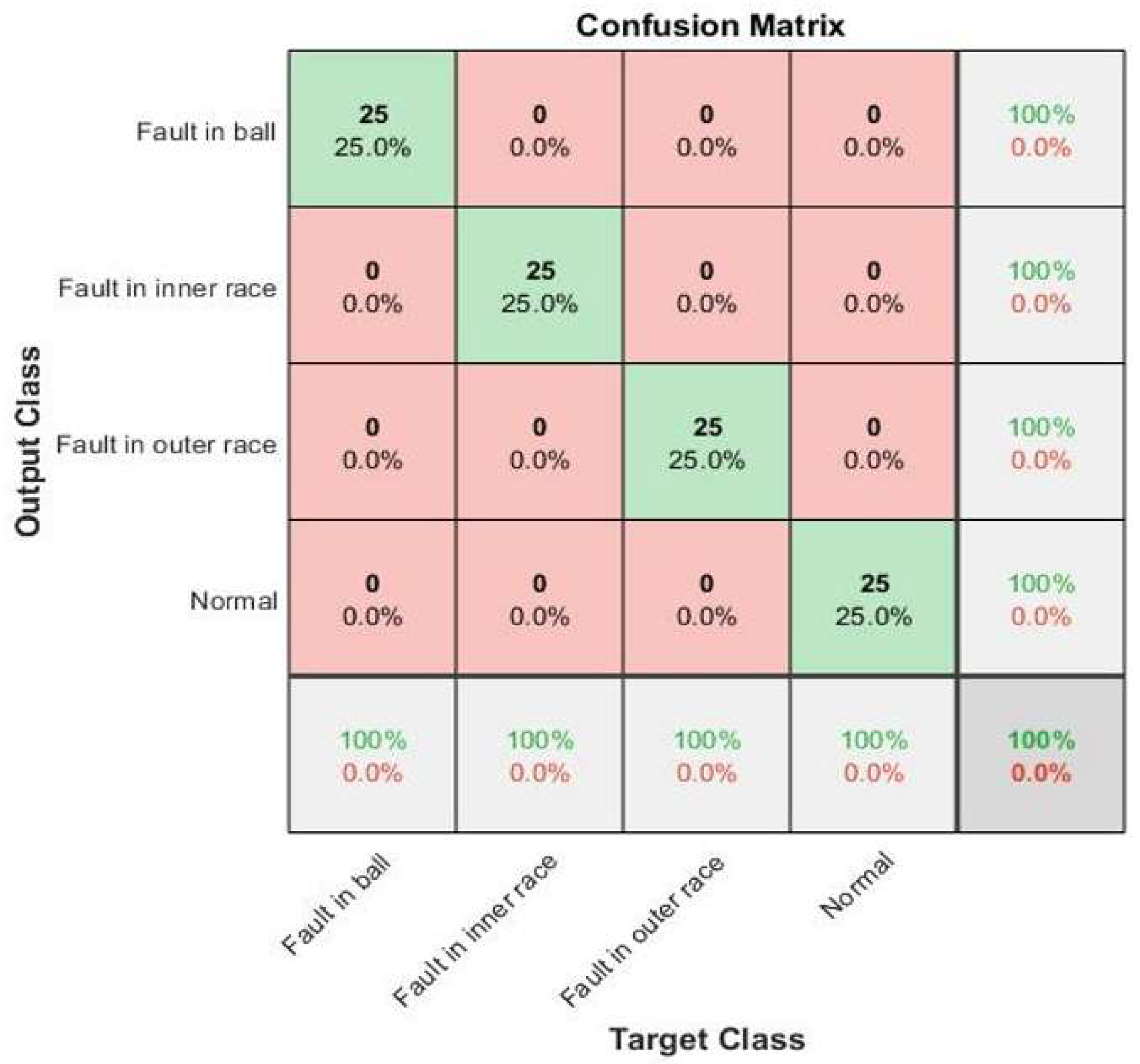
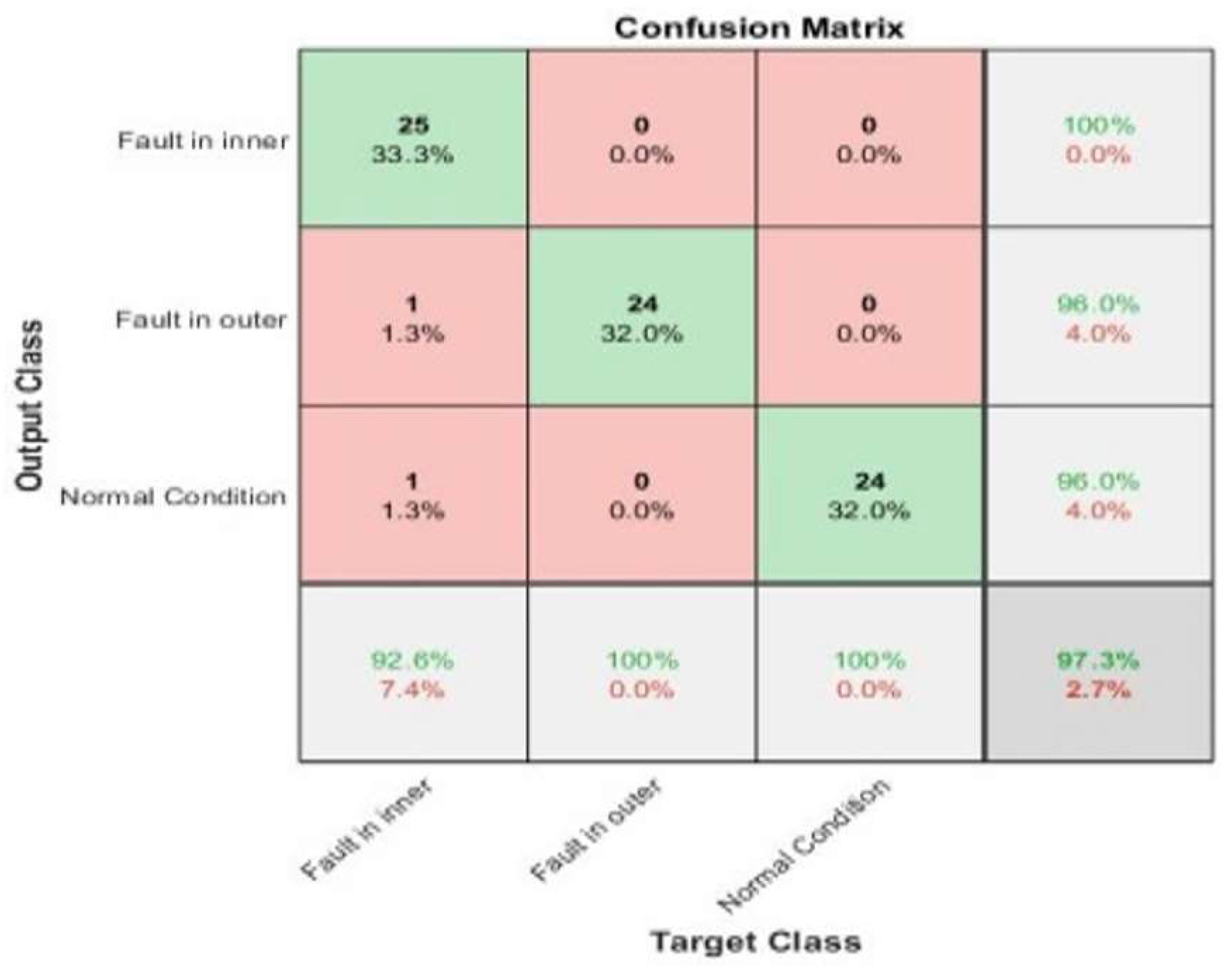
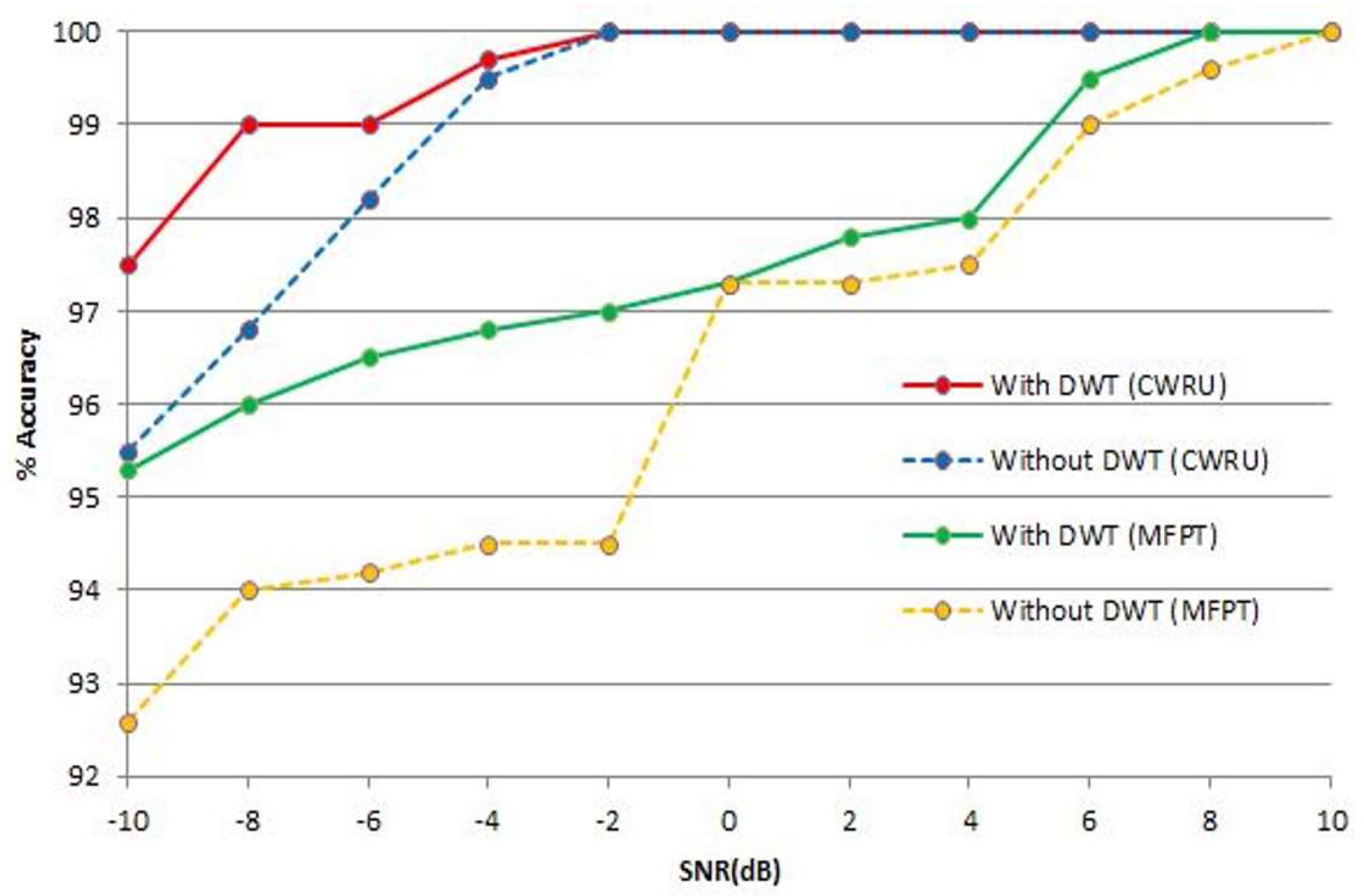
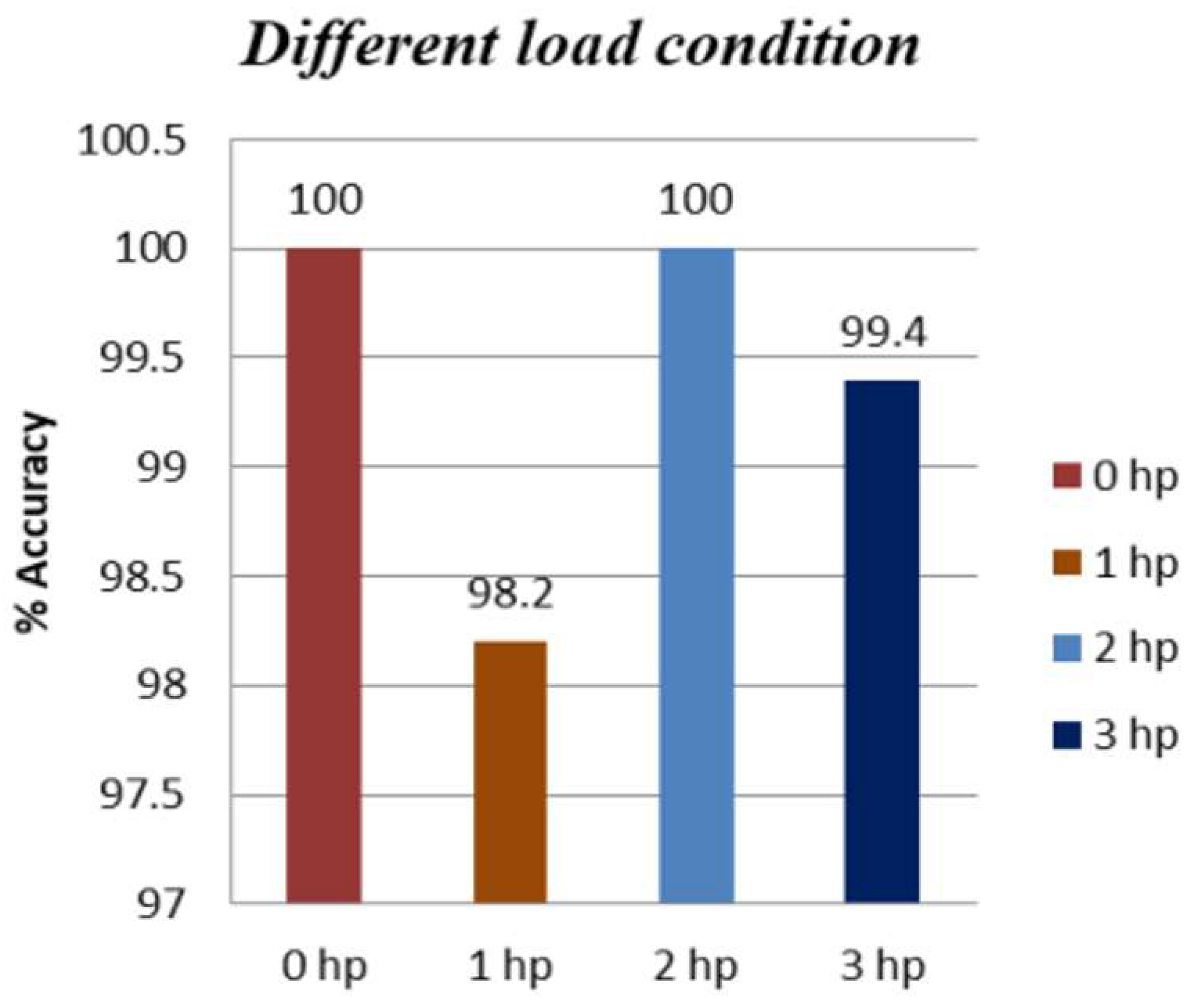
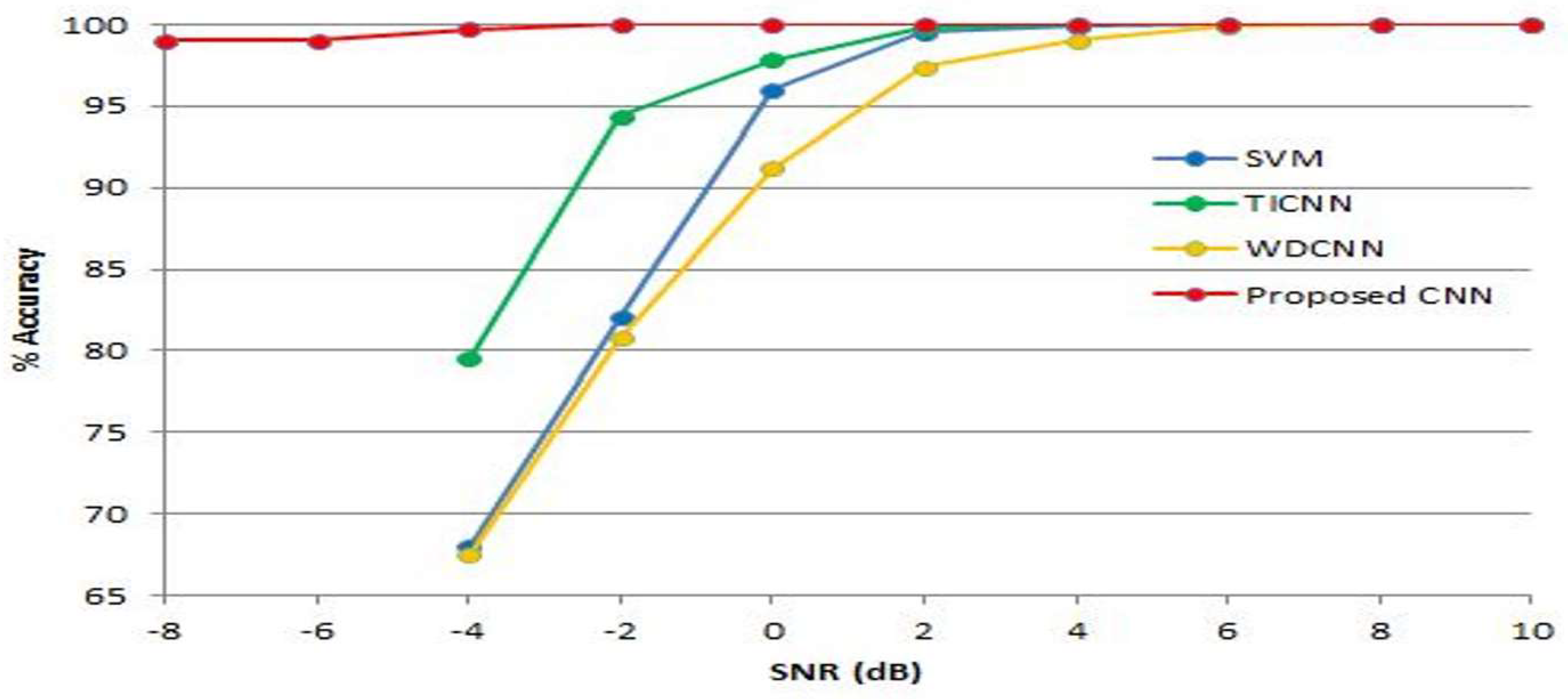


| Parameters | Conditions |
|---|---|
| Epochs | 30 |
| Maximum Iterations | 1000 |
| Performance Function | “mse” |
| Training Function | “trainlm” |
| Optimizer | “sgdm” |
| Validation Frequency | 20 |
| Learning rate | 0.0002 |
Publisher’s Note: MDPI stays neutral with regard to jurisdictional claims in published maps and institutional affiliations. |
© 2022 by the authors. Licensee MDPI, Basel, Switzerland. This article is an open access article distributed under the terms and conditions of the Creative Commons Attribution (CC BY) license (https://creativecommons.org/licenses/by/4.0/).
Share and Cite
Mohiuddin, M.; Islam, M.S. Rolling Element Bearing Faults Detection and Classification Technique Using Vibration Signals. Eng. Proc. 2022, 27, 53. https://doi.org/10.3390/ecsa-9-13339
Mohiuddin M, Islam MS. Rolling Element Bearing Faults Detection and Classification Technique Using Vibration Signals. Engineering Proceedings. 2022; 27(1):53. https://doi.org/10.3390/ecsa-9-13339
Chicago/Turabian StyleMohiuddin, Mohammad, and Md. Saiful Islam. 2022. "Rolling Element Bearing Faults Detection and Classification Technique Using Vibration Signals" Engineering Proceedings 27, no. 1: 53. https://doi.org/10.3390/ecsa-9-13339
APA StyleMohiuddin, M., & Islam, M. S. (2022). Rolling Element Bearing Faults Detection and Classification Technique Using Vibration Signals. Engineering Proceedings, 27(1), 53. https://doi.org/10.3390/ecsa-9-13339






